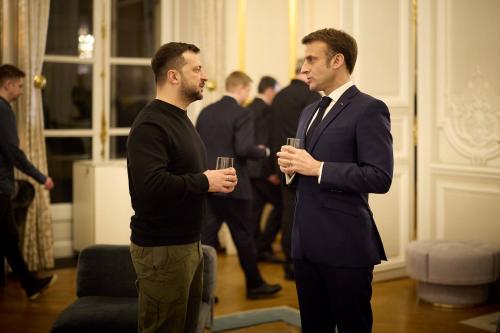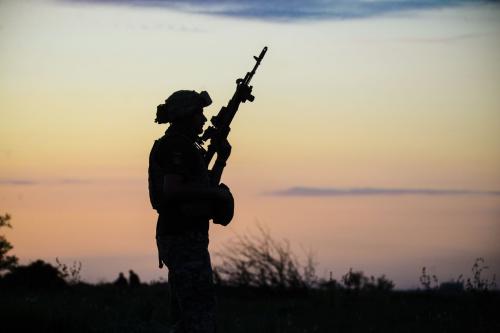A heated debate has developed in the Republic of Korea (ROK, also known as South Korea) about whether the Terminal High Altitude Area Defense (THAAD) missile system should be deployed there. Some opinion leaders are calling for a prompt decision by the government, criticizing it for not speaking clearly on such a grave issue and for appearing to be stuck in between the United States and China.[1] Some pundits have argued that South Korea should agree with the apparent U.S. desire to deploy THAAD, as a way to strengthen ROK-U.S. allied deterrence against North Korea’s growing nuclear and missile threats.[2] Opponents cite the likely financial cost of the system, and the potential for it to cause tension with China.
While the arguments for and against the deployment of THAAD in Korea continue, a senior Chinese official during a recent visit to Seoul stated publicly that he hoped South Korea would respect China’s concerns in making this kind of decision. The remarks were immediately rebuked[3] as many felt that China was openly applying pressure on Korea to not place THAAD on its sovereign territory.[4]
Even when caught in the flurry of policy discourse, the Park Geun-hye government has only reiterated that its final decision on the matter will be taken eventually, and will be pursuant to national interest. Presumably, the government has been carefully examining the policy options, given the multi-faceted implications involved, and yet it appears that it may maintain so-called “strategic ambiguity” for some time.
In the context of the evolving ROK-U.S. alliance, the United States would evidently want to get agreement to deploy THAAD in South Korea as a credible response to the North’s nuclear and missile threats. However, it seems that a couple of anticipatory political fallouts keep the United States from officially requesting the placement of THAAD to the Korean government.
To date, however, the issue has not turned controversial in Korean politics. Only some hawkish politicians in the ruling Saenuri (New Frontier) Party (NFP), have argued forcefully that the placement of THAAD is beyond beneficial and an urgent necessity, given the conspicuous nuclear and missile threats from Pyongyang. But the NFP’s leadership has thus far allowed for the Blue House to call the shots. Interestingly, the opposition New Politics Alliance for Democracy (NPAD) has remained mostly quiet on the issue. This silence looks bizarre in contrast to the position taken by the NPAD’s predecessor party, which had steadfastly opposed the deployment of missile defense systems in South Korea, saying it would unnecessarily incite Chinese anger.
Why has the Park government delayed taking an official decision on the matter? We can assume that the Blue House has undertaken a thorough strategic review on this crucial and complicated issue. On the one hand, the Blue House seems to be concerned about the potential political repercussions and wants to avoid a premature or incorrect decision. On the other hand, it is more likely contemplating strategically meaningful alternatives, as implied by the government’s repetition of its “Three Nos”: on this issue there has been no request from the United States, no negotiations with the United States, and no decision by the Korean government. Apart from the financial implications, a couple of preliminary undertakings would have to be considered.
First is a consideration of what China would or would not do in response to a potential THAAD deployment in Korea. Recent U.S. administrations, both Republican and Democratic alike, have invested constant financial resources and technology into missile defense. Should THAAD be placed in South Korea, near to China’s east coast and northeast region, China would be fearful of its strategic forces being badly compromised. China cannot be sure that THAAD will only target North Korea, despite assurances that THAAD’s scale and technology are not technologically appropriate to counter China’s strategic forces. In the midst of China’s escalating tension with Japan, the potential threat posed by THAAD will be magnified in Beijing’s perception.
Washington’s logic for THAAD as the theater missile defense system has been consistent: it claims that THAAD is the only defensive means to respond to threats from North Korea in Northeast Asia and from Iran in the Middle East. Some Persian Gulf states have agreed to purchase the system from the United States. If Beijing wants to undermine Washington’s logic, North Korea’s missile threats must be evidently under control. This is where China should play an active role in one form or another.
China has largely shed the image of a free-rider in regional security issues since North Korea sparked the ongoing nuclear crisis in late 2002. Since 2003 China has played the crucial role of convening and chairing the Six-Party Talks to address North Korea’s nuclear development. If, in the probable bilateral talks with Seoul on THAAD, Beijing can demonstrate more strong efforts to rein in North Korean missile provocations, the potential friction over THAAD could subside. By doing so, China can counter the reasonable rationale for THAAD deployment in Northeast Asia.
Secondly, the attitude of Japan’s Abe government is also a factor in the ROK’s calculations. In short, the current state of Korea-Japan relations makes it difficult for Seoul to go along with a U.S.-led THAAD deployment in South Korea. Currently Prime Minister Abe’s history-revisionist moves and military build-up are more than problematic, aggravating relations with South Korea and China and shaking the security landscape in Northeast Asia.
Riding on the U.S. “rebalance” toward Asia, the Abe government may attempt to make an ultra-right stance and militarism look legitimate, and this will subvert the genuine effects of President Obama’s policy in Asia. Rightfully, the Obama administration has taken a neutral position of siding neither with Japan nor with China when it comes to their competing claims of sovereignty over the Senkaku or Diaoyu Islands. Prime Minister Abe’s insistence on a clearer U.S. position might have postponed the signing of new U.S.-Japan Guidelines for Defense Cooperation.
Japan’s poor relations with its neighbors, including South Korea, contribute to Seoul’s reluctance to accept THAAD. Like it or not, the placement of THAAD in South Korea will form a de-facto trilateral (U.S.-ROK-Japan) alliance, both strategically and operationally. A trilateral alliance, obviously not the result of the rigorous processes involved in treaty relationships, would likely to reward Japan with a strategic edge over China in the potential Sino-Japan rivalry. This is something that South Korea should not allow to happen.
Further, as long as Japan’s trust deficit remains high, it will make even ROK-Japan security information sharing harder for the South Korean government. Notwithstanding, if the Abe government’s stance would change and deep-rooted distrust between Seoul and Tokyo could be resolved, conditions for South Korean participation in THAAD would be much improved. Here, the Obama administration could find a space potentially to turn the tide. Perhaps this is reason enough for the United States to step up its efforts to encourage Japan to improve relations with its neighbors.
[1] “Strategic inaction” Editorial by Korea Herald, March 16, 2015
[2] “If attacked by North Korean nuke, can China protect us?” Kim Dae-joong Column, Chosun Ilbo, March 17, 2015
[3] “South Korea tells China not to meddle in decision over missile system,” New York Times, March 17, 2015
[4] ‘China threatening not to deploy THAAD,’ Editorial by Chosun Ilbo, March 17, 2015



Commentary
Op-edMissile defense and South Korea: President Park’s strategic ambiguity is warranted
March 27, 2015